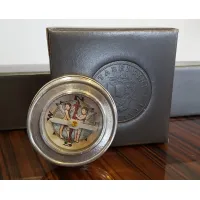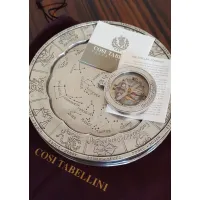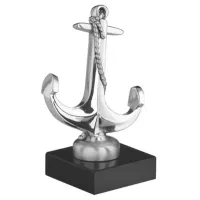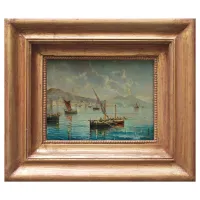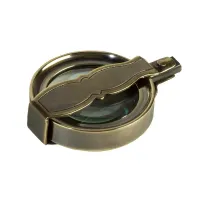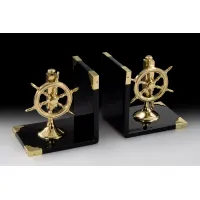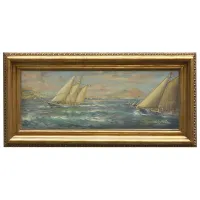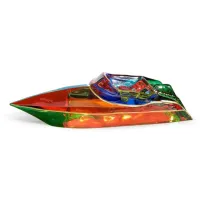Nautical flags from Diderot and D'Alembert's encyclopedia, circa 1770
Stylish antique furniture and accessories
SKU: ANT-A290
See other products from category A gift for sea and ocean lovers or from manufacturer Antyki
Description
Nautical flags from the encyclopedia of Diderot and D'Alembert, circa 1770. An etched copperplate depicting a series of naval flags with watercolor on the back, designed by Goussier and edited by Benard. This antique graphic is presented in a passe-partout and a modern, red lacquered frame with a gold profile, and is in good condition consistent with its 18th-century dating, originating from a private naval antiques collection in Milan.
Prestigious antique furniture and accessories can be an excellent idea for decorating our interiors. Currently, there are more and more enthusiasts of high-quality old products that have a specific character and soul. It's a nod to the history, creation, and design of classic and timeless furniture. There are many different styles in antique furniture, each with its distinctive features.
There are many different styles characterizing antique furniture, but we can highlight a few of the most important ones. Eclectic furniture belongs to the 19th century, which saw the reign of the Biedermeier style. Its variations in the early years of this century include neo-Gothic, Gothic, Rococo, Louis Philippe style, and finally the English Victorian style. By the end of the century, these styles transitioned into pseudo styles of classicism, Renaissance, and Baroque.
Empire style furniture spans the period between the end of the 18th and the beginning of the 19th century. It originated during Napoleon's reign, where there was a significant resemblance and reference to Roman and Greek decorations.
Classicist furniture is the Louis XVI style, which also strongly references ancient architecture. Interesting and noteworthy are all antique products in the Rococo and Louis XV styles. Next is Baroque, whose name comes from the Portuguese barocco – which translates to an irregularly developed pearl. These were very representative pieces of furniture, meant to literally drip with splendor and play a significant role in luxury. Exceptional, selectively used materials were employed to further emphasize the lofty tone of these items.
Today, we can observe how the Baroque style has had a significant influence on today's classic furniture, which is designed with great similarity to the past era. Another significant style is the Renaissance, which flourished in the 15th and 16th centuries and also left a large mark on the art of furniture making. Renaissance style was quite heavy and massive. Brown stains were used, as well as cornices, strong plinths, and bas-reliefs. It can certainly be said that these were quite specific products, but they offered many new possibilities, such as the construction of sideboards or generally broadly understood chest furniture. Here, too, there was an interest in mythology and ancient times, so supports or legs took on animal forms.
Lion's paws, eagle's heads – these are common sights in the Renaissance style. Currently, many global brands recreate such furniture, taking examples from Italian or French creators. This is a manifestation of admiration and care for the history of the most beautiful Renaissance antiques. It is important to remember that in each country, furniture making was perceived differently, so each style in a given country had its own distinct character. This is very important, especially when searching for the right exclusive antique for your interior.
The most important aspect of elite antique furniture is originality. And this is ultimately crucial from the buyer's perspective, as there are many counterfeits circulating in the market. Luxury Products provides a document confirming the product's compliance with the actual description and photo. We have art appraisers, historians, and experts from around the world at your disposal.
Attributes / Details
| SKU | ANT-A290 |
| Manufacturer | Antyki |
| Model | A290 |
| Size | Height: 38 (60) cm Width: 25 (44.5) cm Depth: 2 cm |
| Wiek | XVIII |
| Rok | 1770 |
See catalog
Reviews
No reviews for this product.










